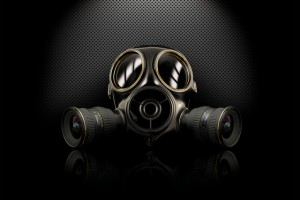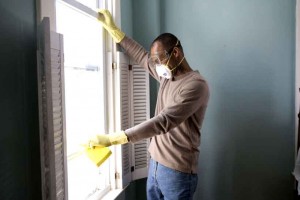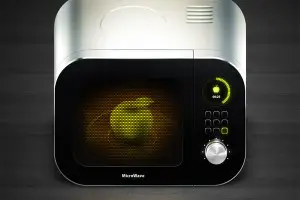I may get commissions for purchases made through links in this post.
“My wife loves scented candles and fragrances, and these have a terrible effect on me. I have told her she is poisoning herself when she burns one of those candles (which she does not do if I am in the house).
Exposure to indoor air fresheners, deodorizers, and scented candles make my eyes burn. All three of these can make me very dizzy and sick, and I can’t be in a room where a scented candle is burning.”
Shocking! the chemical makeup of scented products
According to MCS-America, there are 3,000 to 5,000 different chemicals used in fragranced products, with most of these being derived from petroleum.
Most of these chemicals have not been significantly tested for human toxicity, even though the U.S. National Academy of Sciences has identified fragrances as a subset of chemicals that should undergo neurotoxicity testing.
Notably, many of the chemicals used in fragrances have also been identified by the U.S. Environmental Protection Agency (USEPA) as potentially hazardous .
The exhaust from scented candles also adds toxins to the indoor environment. Scented candles are made from paraffin, which is a petroleum-based product, and the fragrances used to add aroma to these products are also derived from petroleum.
The truth about aromatherapy candles
When aroma-therapy candles are burned, the exhaust can contain volatile organic compounds (VOCs) such as benzene, toluene, and acetone; as well as particulate matter, and soot.
According to the USEPA’s Toxicology Data Network (TOXNET), benzene is a known human carcinogen. While toluene and acetone are not known to cause cancer, TOXNET states that these two chemicals have known human toxicity (USEPA, 2013).
The link between second hand tobacco smoke and parrafin candles
Paraffin candles are as dangerous to the lungs as second-hand tobacco smoke, and the soot from these candles contain the same toxic byproducts as diesel exhaust. One American Lung Association study identified candles as one of the most common unrecognized sources of poor indoor air quality.
Studies in the Medical Literature
One 2009 article published in the Environmental Impact Assessment Review examined six fragranced consumer products (three air fresheners and three laundry products).The study included chemical analyses of the products and a regulatory review of the chemicals found.
- The chemical analyses of these six products revealed the presence of nearly 100 VOCs.
- Ten of the identified VOCs were found to be regulated as toxic or hazardous under federal law, with three (acetaldehyde, chloromethane, and 1,4-dioxane) classified as Hazardous Air Pollutants (HAPs).
- The study concluded that many fragranced consumer products contain chemicals that are not disclosed on product labels or on Material Safety Data Sheets (MSDS),
- and that there is a need for improved understanding of product constituents and the mechanisms of exposures to fragranced products and their effects).
Why you should be wary about green fragranced products
A follow-on study published in the same journal in 2011 examined 25 fragranced products, including products labeled as “green” products. This study identified 133 VOCs from these products, with an average of 17 VOCs found in each product. Twenty-five of the VOCs identified were classified as either hazardous, toxic, or as carcinogens under U.S. federal laws.
Emissions from “green’ products were not significantly different from those not considered to be “green.”
The study noted that only one of the identified VOCs was listed on a product label, and only two were found on a MSDS. The study also noted that U.S. regulations do not require disclosure of all ingredients in a consumer product, or of any ingredients in a mixture called a fragrance (Steinemann, A.C., et al., 2011).
A 1999 study examined the potential hazards associated with the use of scented candles, noting that the scented candle industry generated $2 billion dollars in annual sales. The study noted that the combustion of scented candles in residences (which generally have low ventilation rates), may raise indoor concentrations of combustion byproducts.
The study noted that exposures to soot and other candle emissions may constitute a health risk, though there is a lack of data on the volatile, semi-volatile and particulate emissions of candles, and their potential associate risks. This study analyzed the emissions of 91 candles burned inside a stainless steel combustion chamber and examined the outputs of soot, benzene, and lead.
Candle soot was found to contain numerous adsorbed organic compounds, including dibutyl phthalate, diethyl phthalate, toluene and styrene. VOC emissions included benzene, styrene, toluene, ethyl benzene, naphthalene, acetylaldehyde, benzaldehyde, ethanol, and 2-butanone. Aerosolized lead emissions were significant from some of the candles evaluated.
The study concluded that possible impacts on public health from consumer use of scented candles may include;
- increased risk of cancer,
- neurological and behavioral deficits,
- as well as aggravation of existing respiratory diseases, such as asthma (Source).
What about beeswax candles?
Often beeswax candles are mentioned as safe but many people who suffer from asthma and similar ailments can attest that they are horrible for your lungs. They emit a thick black smoke containing tiny particles you don’t want to inhale.
Multiple Chemical Sensitivity (MCS) triggered by scented candles and fragranced products
Some people, when exposed to the vapors and airborne chemicals that come from these products become so gravely ill that they must literally isolate themselves from society because any chemical exposures trigger severe reactions in them.
People falling into the latter category suffer from a syndrome known as Multiple Chemical Sensitivity (MCS).
MCS is a diagnostic label for people who suffer illnesses as a result of exposures to a variety of airborne agents and other substances. The syndrome can cause dysfunction in those prone to the disorder when they are exposed to low levels of environmental chemicals. The effect is similar to exposing a healthy person to a large dose of poison (MCS-America.org, 2013a).
In Summary
Exposures to chemicals in the environment can lead to severe symptoms in some people, including MCS. Many fragranced products, including so-called “green” products emit VOCs and other chemicals that are regulated as hazardous (i.e., toxic or cancer causing) by the USEPA.
Scented candles emit toxic combustion byproducts that contribute to indoor air pollution. A problem is that regulations do not require disclosure of all ingredients in fragrances.
The bottom line is that indoor air fresheners, deodorizers and scented candles can contribute significantly to degraded indoor air quality when they are used, and can have severe health effects on those prone to develop MCS on exposure to aerosolized constituents from these products.
A safe alternative are home made potpouri, and (medical grade) essential oils. An example of 100% pure essential oils are Young Living Essential Oils.
A really popular oil of this brand is Thieves. Thieves® is a proprietary blend of pure essential oils tested at Weber State University, Ogden, Utah, and found to be effective against airborne bacteria. It was created based on research about four thieves who, during the Medieval black plague in the 15th-century, used rosemary, cloves, and other aromatics to protect themselves while robbing plague victims.
Do you use scented candles or other fragranced air fresheners in your home?
























I’m so saddened by this but thankfully am becoming more educated about the unhealthy effects of scented candles.
I started noticing that every time I burn my Bath and Body Works candles (which smell wonderful but are very strong) I feel stuffy, tired and slightly nauseated.
I also have MTHFR genetic defect and my body does not process toxins effectively, which I’m sure does not help.
I suppose I’ll be throwing my candle collection out and starting over with something nontoxic! Thanks for this information.
My story began in the fall of 2014 when I was diagnosed with triple negative breast cancer. It shattered my world and everything I believed in – having been physically active, a non-smoker, a non-drinker and at my ideal weight. Then boom!
I began re-evaluating my lifestyle choices, my eating habits and my environment. It took me on a very different path. I left my day job and focused on my health. During the journey I was inspired to re-design my career and create something that would have value and purpose. Oddly enough it began with my passion for fragrant candles.
Scented candles have always been a part of my life and after discovering a large majority of mass marketed candles contain harmful chemicals and additives in their products, I was unwilling to simply walk away from using scented candles. Instead, I set out to design the perfect medium in order to create a highly fragrant, clean burning, pure and natural product that was safe for my family, my pets and the environment.
My pets were an integral part of my healing process and after nearly 18 months of research, I created a proprietary blend of 100% certified organic waxes. I sourced the highest quality essential and fragrant oils that are phthalate free, creating captivating scents of wax melts designed in the shape of a paw. Why the paw? To pay tribute to our furry friends who help us through life’s difficult times. In particular my 3 cats who were beside me and loved me unconditionally during the entire time. We also donate a portion of our profits to animal shelters.
I don’t know whether the frequent use of scented candles had any influence on my health prior to my diagnosis, but I do know that I will NEVER again use any scented candle/wax melt that isn’t 100% organic and natural. My health and that of my family and pets is far too precious to take the risk.
Thank you for creating a forum for women to share their stories. Please check out my new Paw Melts website and let me know what you think => http://www.pawmelts.com/
Carpe Diem
Sarah
For years I have gotten sick from scented products. I’m usually really healthy and don’t get colds hardly ever, but I do get very sick from chemicals.
Right now I’m lying in bed because I went to a meeting three days ago and somebody sprayed bathroom freshener. I immediately started coughing. Since then I have aches and pains, A sore throat, lung sensitivity, a slightly elevated temperature, and now a nasal infection.
I usually go to the gym five days a week and yesterday I went for a half hour and that’s it. Today , when I woke up my blood pressure was 90/55 and my pulse was over 100. My blood pressure has stabilized but my pulse is still over 100. This is crazy.
The chemicals they use for all scented products cause cancer. They are protected under the guise of being “proprietary.”
https://cleanerindoorair.org/publications/handouts/fragrance-tidbits/
I am going to call bull s on this one. Sure, some people will get annoyed or irritated by them, usually the same ones who are irritated by anything that is used to make the air smell good. I have things that I don’t care for also, like anything that has to do with cloves or licorice. Gag!! The scented wax cubes that I burn in my burner are amazing and they help me relax and relieve stress to a point. I don’t doubt they are cancer causing since most everything is these days. I will bet that there is something in my socks that causes cancer. I will continue to use my scented zen cubes since it is one of the few pleasures that I have left .